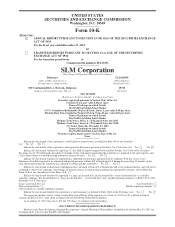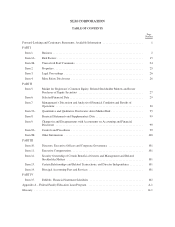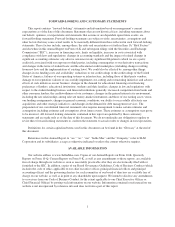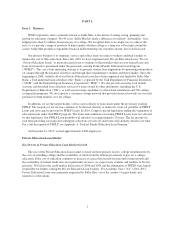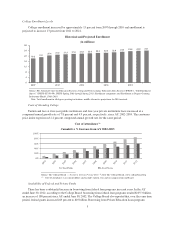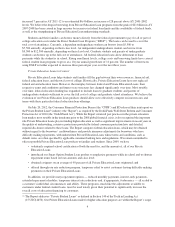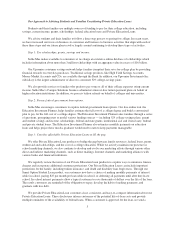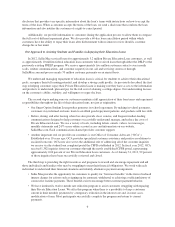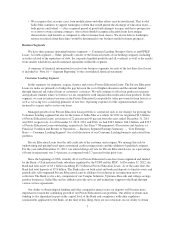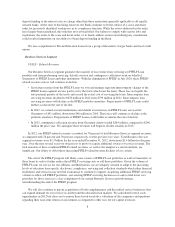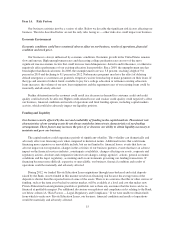Sallie Mae 2012 Annual Report Download - page 7
Download and view the complete annual report
Please find page 7 of the 2012 Sallie Mae annual report below. You can navigate through the pages in the report by either clicking on the pages listed below, or by using the keyword search tool below to find specific information within the annual report.Our Approach to Advising Students and Families Considering Private Education Loans
Students and their families use multiple sources of funding to pay for their college education, including
savings, current income, grants, scholarships, federal education loans and Private Education Loans.
We advise students and their families to follow a three-step process to paying for college. In recent years,
we have increased our focus on business-to-consumer and business-to-business activities that align with each of
these three steps and our future plans revolve largely around continuing to develop these types of activities.
Step 1: Use scholarships, grants, savings and income.
Sallie Mae makes available to consumers at no charge an extensive online database of scholarships which
includes information about more than 3 million scholarships with an aggregate value in excess of $16 billion.
Our Upromise consumer savings network helps families jumpstart their save-for-college plan by providing
financial rewards on everyday purchases. Traditional savings products, like High Yield Savings Accounts,
Money Market Accounts and CDs, are available through the Bank. In addition, our Upromise Investments Inc.
subsidiary is the largest administrator of direct-to-consumer 529 college-savings plans.
We also provide services to families who prefer to pay some or all of their college expenses using current
income. Sallie Mae’s Campus Solutions business administers interest-free tuition payment plans on behalf of
higher education institutions. In addition, we process tuition refunds on behalf of colleges and universities.
Step 2: Pursue federal government loan options.
Sallie Mae encourages consumers to explore federal government loan options. Our free online tool, the
Education Investment Planner, helps families estimate the full cost of a college degree and build a customized
plan to pay for the full cost of a college degree. The Education Investment Planner takes families through a series
of questions, prompting users to model various funding sources — including 529 college-savings plans, parent
and student savings and income, scholarships, federal and state grants, institutional aid, and if necessary, federal
and private student loans. The Education Investment Planner also estimates monthly payments on education
loans and helps project how much a graduate would need to earn to keep payments manageable.
Step 3: Consider affordable Private Education Loans to fill the gap.
We offer Private Education Loan products to bridge the gap between family resources, federal loans, grants,
student aid and scholarships, and the cost of a college education. While we actively maintain our presence in
school marketing channels, we also continue to develop and evolve our marketing efforts through various other
direct and indirect marketing channels, such as direct mailings, Internet channels and marketing alliances with
various banks and financial institutions.
We regularly review the terms of our Private Education Loan products to explore ways to minimize finance
charges and incorporate additional consumer protections. Our Private Education Loans can include important
protections for the family, including tuition insurance, and death and disability loan forgiveness. Through our
Smart Option Student Loan product, our customers now have a choice of making monthly payments of interest
while in school, paying $25 per month per loan while in school, or deferring all payments until after they leave
school. In-school interest payments allow a typical customer to save thousands of dollars over the life of the loan.
The result: customers are reminded of the obligation to repay, develop the habit of making payments, and
graduate with less debt.
We provide Private Education Loan customers clear, consistent, and easy-to-compare information about our
Private Education Loans. These disclosures inform customers of the potential life-of-loan costs and provide
multiple reminders of the availability of federal loans. When a customer is approved for the loan, we send a
5

